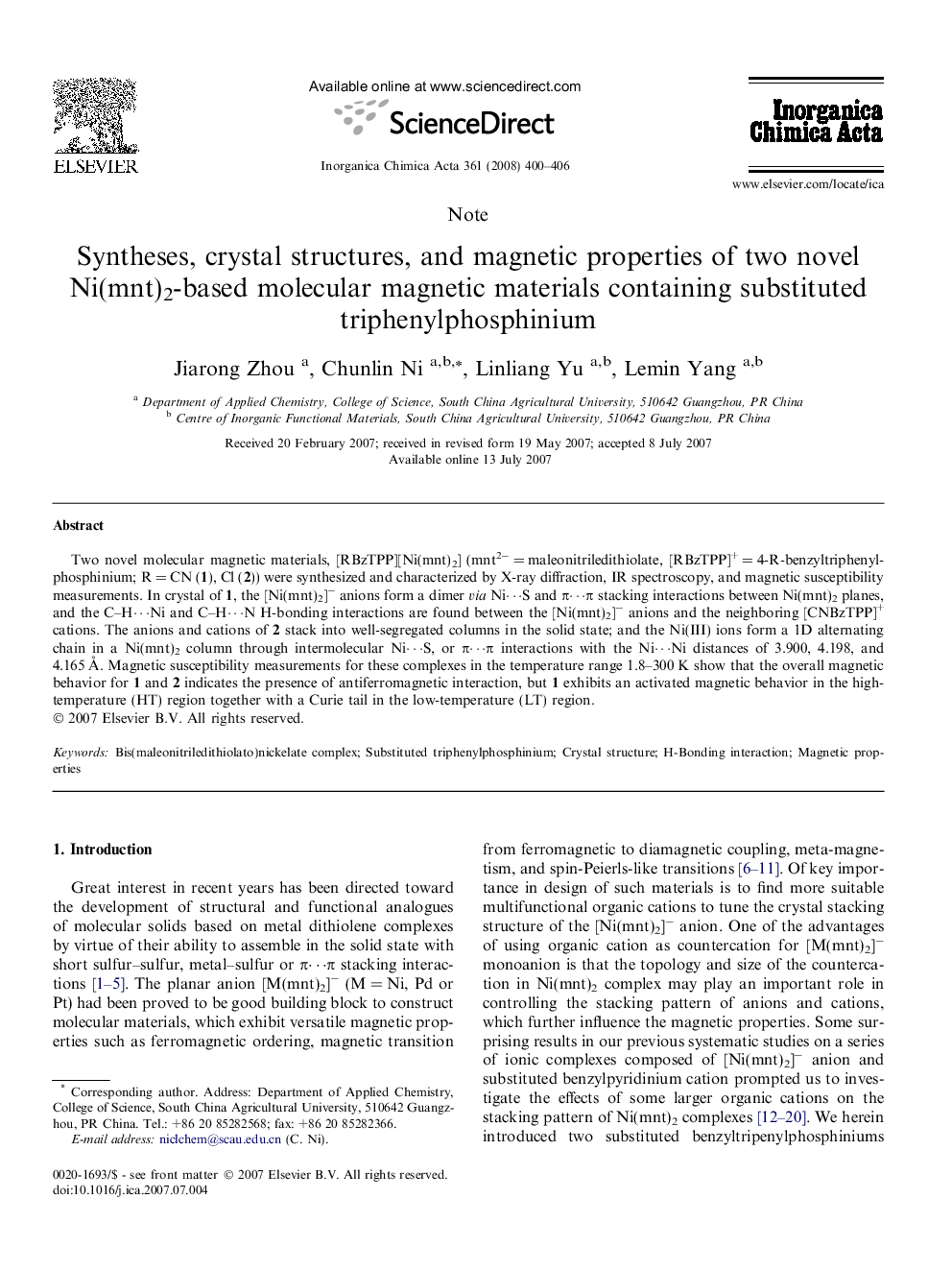| Article ID | Journal | Published Year | Pages | File Type |
|---|---|---|---|---|
| 1307610 | Inorganica Chimica Acta | 2008 | 7 Pages |
Two novel molecular magnetic materials, [RBzTPP][Ni(mnt)2] (mnt2− = maleonitriledithiolate, [RBzTPP]+ = 4-R-benzyltriphenylphosphinium; R = CN (1), Cl (2)) were synthesized and characterized by X-ray diffraction, IR spectroscopy, and magnetic susceptibility measurements. In crystal of 1, the [Ni(mnt)2]− anions form a dimer via Ni⋯S and π⋯π stacking interactions between Ni(mnt)2 planes, and the C–H⋯Ni and C–H⋯N H-bonding interactions are found between the [Ni(mnt)2]− anions and the neighboring [CNBzTPP]+ cations. The anions and cations of 2 stack into well-segregated columns in the solid state; and the Ni(III) ions form a 1D alternating chain in a Ni(mnt)2 column through intermolecular Ni⋯S, or π⋯π interactions with the Ni⋯Ni distances of 3.900, 4.198, and 4.165 Å. Magnetic susceptibility measurements for these complexes in the temperature range 1.8–300 K show that the overall magnetic behavior for 1 and 2 indicates the presence of antiferromagnetic interaction, but 1 exhibits an activated magnetic behavior in the high-temperature (HT) region together with a Curie tail in the low-temperature (LT) region.
Graphical abstractTwo novel molecular magnetic materials, [RBzTPP]+[Ni(mnt)2]− (mnt2− = maleonitriledithiolate, [RBzTPP]+ = 4-R-benzyltriphenylphosphinium; R = CN (1), Cl (2)) have been characterized structurally and magnetically. The Ni(mnt)2- anions form a dimer for 1 and a 1D alternating zigzag chain for 2. The overall magnetic behavior for 1 and 2 indicates the presence of antiferromagnetic interaction, but 1 exhibits an activated magnetic behavior in the high-temperature (HT) region together with a Curie tail in the low-temperature (LT) region.Figure optionsDownload full-size imageDownload as PowerPoint slide
